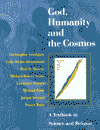|
We illustrate the scientist-theologians’
discussion of this central Christian claim by extending our comparison of the
work of two British scientist-theologians - Arthur Peacocke and John
Polkinghorne.
The normative Christian miracle of the
resurrection of Jesus finds Peacocke and Polkinghorne close in many respects, but with differences of
emphasis. finds Peacocke and Polkinghorne close in many respects, but with differences of
emphasis.
-
Polkinghorne sees the New Testament accounts as, overall,
offering a self-consistent account of a bodily resurrection which left a tomb
empty and which led to appearances of the risen Lord in a transformed type of
body. ‘The empty tomb is of great importance, “with its proclamation that the
risen Lord’s glorified body is the transmutation of his dead body; that in
Christ there is a destiny not only for humanity but also for matter.”’
-
Peacocke would agree that something
happened which was no mere trick within the psyches of the disciples, but he is
much more reluctant to accept either the emptiness of the tomb, or indeed the
theological desirability of an empty tomb. Clearly other human tombs are not
empty. The atoms that were ‘us’ become dispersed at our death. If we are
resurrected with any sort of embodied status, it is because the pattern that
was most distinctively ourselves has been held in God. Jesus’ resurrection body
was also of a different order, not easy to recognise, able to pass through
walls. This must surely also reflect a pattern transmuted in God. So the atoms
of Jesus’ body are, for Peacocke’s theological naturalism, much better left to
disperse in the tomb. Clearly other human tombs are not
empty. The atoms that were ‘us’ become dispersed at our death. If we are
resurrected with any sort of embodied status, it is because the pattern that
was most distinctively ourselves has been held in God. Jesus’ resurrection body
was also of a different order, not easy to recognise, able to pass through
walls. This must surely also reflect a pattern transmuted in God. So the atoms
of Jesus’ body are, for Peacocke’s theological naturalism, much better left to
disperse in the tomb.
-
See Peacocke and Polkinghorne
compared, Peacocke and Polkinghorne: comparison of models of divine action, and
the question of miracle.
Email
link | Feedback | Contributed by: Dr.
Christopher Southgate
Source: God, Humanity and the
Cosmos (T&T Clark, 1999)
|




